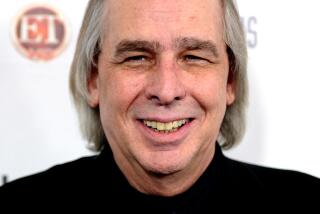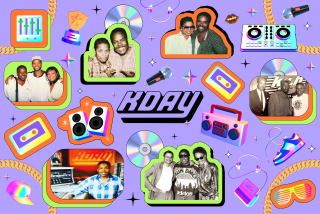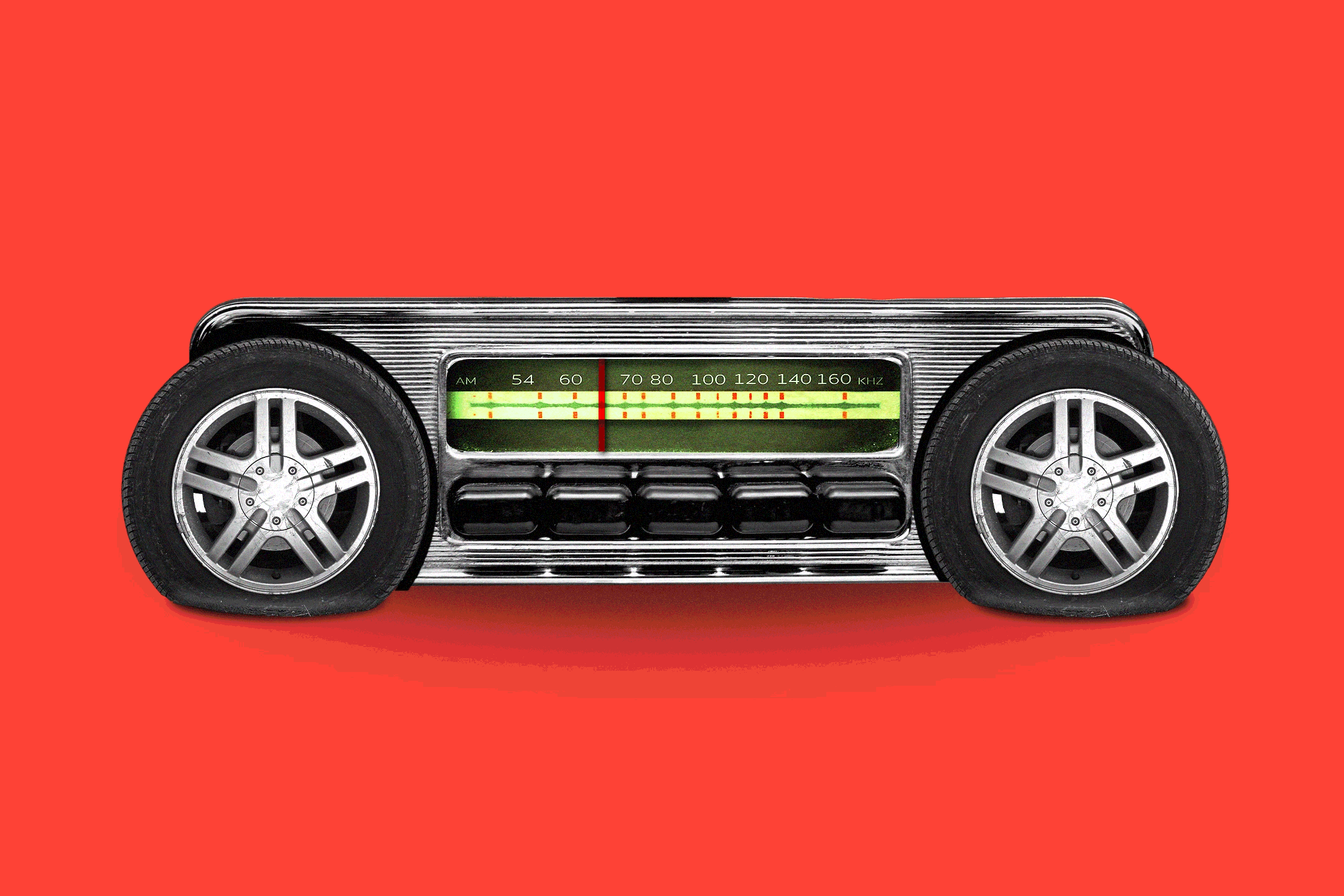For 25 Years, He’s Enjoyed Radio Days : Ham Operator’s Contacts Have Spanned the Globe
- Share via
Cell phones?
The Internet?
New communications technology is all well and good, but after a quarter century as a licensed amateur radio operator, R. Dale Piedfort sees no threat to the community of roughly 2 million people around the world he affectionately calls “hams.”
“The Internet is a great tool--it works well in conjunction with radio--but it lacks the personal touch,” said Piedfort, a 56-year-old salesman at Ham Radio Outlet in Anaheim.
“Some people say, ‘Well, we’ve got Internet phone right now, what do we need radio for?’ ” he said, referring to voice communications possible on the Internet.
“Internet phone does absolutely nothing for me--I took it off my computer. It doesn’t take any skill; it doesn’t take any knowledge; there is no challenge. Any boob can sit down and fire up Internet phone and talk to somebody.”
Operating about $17,000 worth of equipment in a converted dining room at his Anaheim home, Piedfort knows how to seek out radio frequencies that work best for a particular place at a particular time of day, how to carefully aim his transmission beam while dodging radio interference from sun spots and solar flares. He uses the Internet to monitor solar weather forecasts from the National Oceanic and Atmospheric Administration.
As a “DXer,” his specialty is to employ these skills to reach some of the most remote parts of the planet. In ham radio, the term DX means long-distance communication, often to another country.
When Piedfort first qualified for a Federal Communications Commission license, he had to demonstrate proficiency in Morse code. Would-be operators can now get on the air with a “no code technician license,” a greatly simplified course of study. But the mastering of amateur radio technology can take years, said Piedfort, whose call letters are KB7UB. His radio pals call him Uncle Bubba.
Piedfort has won numerous achievement awards for the number of radio contacts he’s made throughout the world. They are confirmed by the mailing of “QSL” cards--postcards imprinted with the operator’s call letters and location. In radiospeak, QSL means: I understand, I confirm. He is six countries shy of the Holy Grail for long-distance ham radio enthusiasts, the Honor Roll. Membership to this elite group currently requires proven contact with 329 countries, many of which are geographical areas that fall short of official status as a nation.
“We’ll consider any rock that sticks up out of the ocean--that could be a country. There’s things that people have never heard of: the Royal Knights of Malta--that’s considered a country. It’s in the island of Malta. Everybody can work Greece, but everybody has trouble working Mount Athos, which is in Greece. It’s considered a separate country.”
Ham radio organizations sometimes spend thousands of dollars to send operators to remote parts of the globe, Piedfort said, to establish a communications link with enthusiasts back home who are trying to increase the number and diversity of locations they have reached. The result can be thousands of radio hams competing with each other to reach a single operator.
“We have what we call DX pileups. You get some guy sitting on a barren rock somewhere, and everybody needs to work this guy because they’ve got to have his QSL card because they need that country.
“Picture 10,000 people calling this guy at the same time--it’s just a hum. But you learn how to get around that. You can hear when the roar starts to die down because you’re going to be listening for this guy who’s transmitting, and you sneak your call in at the last minute. It’s called ‘tailgating.’ ”
The only place in the world completely off-limits to ham radio operators is North Korea.
“There are no other political boundaries. That’s the only country that is not on the air.”
Even with about 2 million ham radio operators worldwide, Piedfort said the amateur radio community is a relatively close-knit group. “The people you talk to are so much fun. You can have a half-dozen people in a round-table discussion. You can have somebody from Japan, Australia, Alaska, and places you’ve never heard of.
“And the great thing about being an active ham radio operator is that you can probably travel anywhere in the world without much expense. I used to have a kid come over from Sweden, a ham, and he’d spend five weeks at my home every year. I’ve had families from all over the world come stay with us.”
The quest for making radio contact with countries throughout the world is only a small part of the amateur radio hobby, Piedfort said.
“Amateur radio really exists because it’s a public service. During the 1979 Laguna Canyon fire, ham radio operators were the first ones on the scene. We ended up feeding the firefighters down there. We’ve helped out during all of Orange County’s major disasters. And there are thousands of us, myself included, who provide communications for all these community events that the cities do not have the money to provide communications for. Whenever there is a big public event going on, you’ll find a ham radio operator there.”
(BEGIN TEXT OF INFOBOX / INFOGRAPHIC)
Profile: R. Dale Piedfort
Age: 56
Hometown: Detroit
Residence: Anaheim
Family: Wife, Dee; five grown children
Education: Wayne Memorial High School in Wayne, Mich.
Background: Five years in the U.S. Navy as a flight crew member in charge of aviation ordnance on submarine surveillance flights; numerous sales jobs in the amateur radio equipment industry; currently a salesman at Ham Radio Outlet in Anaheim, a 12-store chain and the largest supplier of amateur radio equipment in the world
Ham Radio: Twenty-five years’ experience as an FCC-licensed amateur radio operator; a member of Radio Amateurs Civil Emergency Services, the national Amateur Radio Emergency Services, California Microwave Relay Assn., Southern California-Arizona Repeater Assn.; communications assistance during numerous county emergencies and community events; holder of numerous achievement awards, including the Worked All States award, Worked All Continents award, the DXCC award for radio contact with 100 countries; W-100N #39 award for contacting 100 nations; co-creator of a comprehensive ham radio Internet site (www.dxer.com) with colleague Bob Novak
Global Village: “There are no enemies on the air. Everybody you talk to on the air is no different than you are. I don’t care what country they’re from. There are about 2 million amateur radio operators in the world. We don’t have any trouble getting along.”
Source: R. Dale Piedfort; Researched by RUSS LOAR / For The Times
More to Read
Sign up for Essential California
The most important California stories and recommendations in your inbox every morning.
You may occasionally receive promotional content from the Los Angeles Times.










